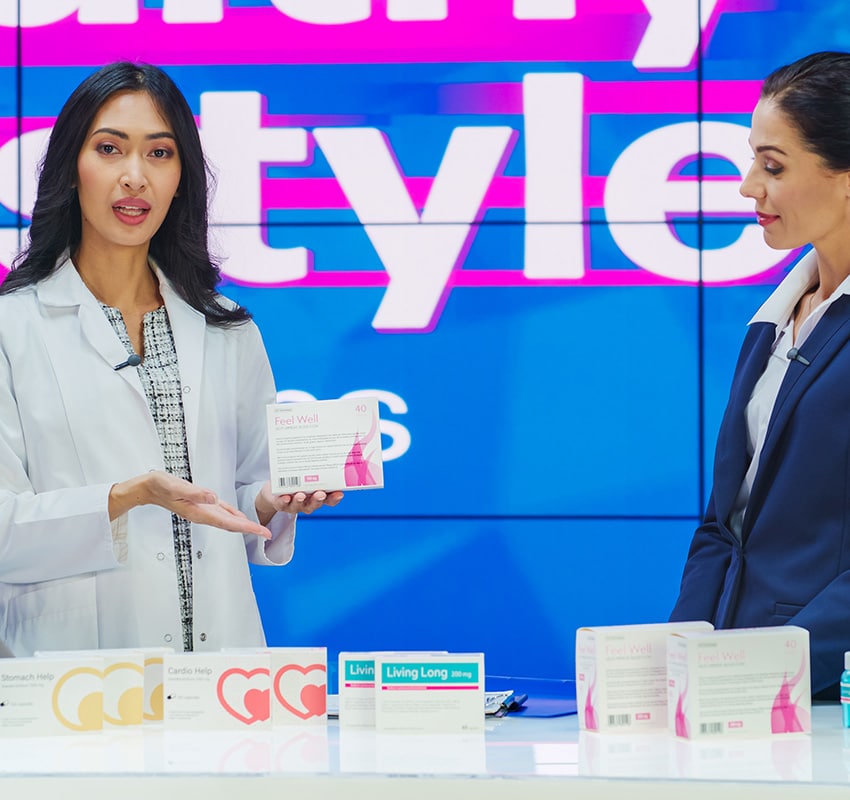Why There Are More Drug TV Commercials
Why are our television viewing experiences increasingly interspersed with pharmaceutical ads, and what impact does this have on us as consumers? In this article, we’re taking a close look at the factors fueling the rise in pharmaceutical ads on TV, the tactics behind these billion-dollar campaigns, and the regulations that oversee them. We’ll also address how these ads shape consumer health decisions, the doctor-patient relationship, and the future of pharmaceutical marketing.
Key Takeaways
- Pharmaceutical TV ads are closely regulated by the FDA to ensure they provide accurate, balanced information about drug benefits and risks, with mechanisms in place for public input and oversight to protect consumer interests.
- Recent shifts in FDA regulations have allowed for an increase in direct-to-consumer pharmaceutical TV advertising, leading to annual expenditures exceeding $6 billion, with an emphasis on direct engagement through strategic ad placements and event tie-ins.
- Increased health consciousness among consumers drives the proliferation of drug commercials, empowering patients to discuss treatments with their healthcare providers.
The Evolution of Pharmaceutical TV Advertising
The evolution of pharmaceutical TV advertising has seen significant changes over the decades. Initially, pharmaceutical advertising was minimal and focused mainly on over-the-counter (OTC) medications due to strict FDA regulations, which kept prescription drugs off TV.
In the 1980s, the FDA began allowing advertisements for prescription drugs, though these early DTC ads were lengthy and complex due to the need to include exhaustive information about side effects and risks. This started to change in 1997 when the FDA relaxed its regulations, allowing pharmaceutical companies to air ads with brief risk mentions as long as detailed information was accessible through other means. This shift led to a surge in pharma advertising on TV.
By the early 2000s, DTC ads became more sophisticated and engaging, often featuring patient testimonials and endorsements from healthcare professionals. These ads became a significant part of TV advertising, shaping consumer behavior and making pharmaceutical products more relatable and trustworthy.
Impact on Health Awareness and Patient Empowerment
The modern consumer is increasingly health-conscious and proactive about managing their health. This shift in consumer behavior has led to a greater demand for information about medical treatments and pharmaceuticals. Drug commercials cater to this demand by providing information about treatment options for various conditions, thus playing a role in educating the public.
Direct-to-consumer advertising also empowers patients by making them aware of treatment options that they might not have known about otherwise. This awareness enables patients to engage in more informed discussions with their healthcare providers. By asking their doctors about specific medications they have seen advertised, patients can play a more active role in their healthcare decisions. This shift towards patient empowerment is a significant factor driving the increase in drug commercials.
Analyzing Top Pharma Brands’ TV Ad Strategies
The surge in drug-related TV commercials is indicative of a broader trend shaping pharmaceutical advertising strategies. Top pharma brands strategically allocate substantial ad spend towards television advertisements to enhance their market presence and reach a wider audience. For instance, Pfizer’s significant expenditure on TV ads for Cibinqo, alongside AbbVie’s allocation towards Rinvoq and Skyrizi, underscores the strategic importance of television advertising within the pharmaceutical industry.
These brands meticulously plan their TV ad campaigns to optimize exposure and impact. For example, Skyrizi’s deliberate choice to heavily advertise during prominent TV slots, such as NBC’s evening and morning news segments, demonstrates a strategic marketing push to maximize impressions and visibility. Similarly, premier events like the Grammy Awards or hit TV shows serve as ideal launch platforms for new advertising campaigns, allowing pharma brands to capture the attention of diverse viewerships and effectively promote their products.
By analyzing the TV ad strategies of top pharmaceutical brands, one can gain valuable insights into the evolving landscape of drug advertising. These strategic investments in television commercials reflect the industry’s recognition of the power of this traditional yet impactful medium in shaping consumer perceptions and driving brand awareness.
The Role of FDA Approval in TV Ads
The fascination with the creative and tactical elements of pharmaceutical television commercials should be matched by an appreciation for the regulatory environment that shapes these ads. The responsibility to monitor the advertising of prescription drugs falls on the FDA, which is tasked with verifying that such promotions are factual and non-deceptive. This oversight is critical in safeguarding consumers against unsubstantiated claims and potential dangers.
Advertising for prescription medications adheres to federal regulations set out by acts like the Federal Food, Drug, and Cosmetic Act. It’s under this legislative framework that the FDA’s Office of Prescription Drug Promotion scrutinizes drug advertisements ensuring they convey reliable, balanced information essential for well-informed consumer decisions about advertised medications.
Beyond simply regulating fairness in content dissemination through TV ads related to drugs, there’s a strong drive from the FDA towards involving public perspectives within their regulatory scope. By arranging open meetings and seeking commentary ahead of implementing new proposals, they reflect their acknowledgment of how crucial it is to value consumer insights during rule-making stages concerning drug promotion activities.
Hence, it is imperative that regulated promotional content upholds stringent standards of accuracy under the vigilant supervision of authorities like the FDA. This becomes even more critical in light of advancements in medicinal sciences, which introduce complexities regarding potential adverse effects or drug interactions. Therefore, precise communication within advertisements targeted at prospective consumers is essential to ensure informed decision-making and uphold public safety standards.
Significance of TV Ad Impressions
In the realm of advertising, ad impressions stand as a pivotal metric, offering crucial insights to advertisers. These impressions unveil how frequently consumers view a television advertisement, making them indispensable for assessing effectiveness and market penetration. Evaluating TV ad impressions involves key performance indicators such as reach, visibility, rate of complete viewing, and frequency tracking.
However, public sentiment toward TV commercials promoting pharmaceutical drugs remains divided. While some viewers appreciate their role in raising healthcare awareness, others remain skeptical about their actual effect on consumer behavior. Such varying perspectives highlight the complexities involved in assessing the success rates of these advertisements.
Despite challenges in interpretation and measurement, it’s undeniable that television commercials wield considerable influence in shaping viewer perceptions and guiding behaviors. With continuous substantial investments from pharma companies, understanding and leveraging impression metrics becomes essential in devising potent and persuasive advertising campaigns that align with industry standards. This is particularly crucial given the significant sums that the pharmaceutical industry spends on advertising campaigns.
Evolution of Pharma TV Advertising: Future Trends
Looking toward the future, the landscape of pharmaceutical TV advertising is poised for notable shifts and advancements. One emerging trend is the increasing integration of digital elements into TV commercials. As technology evolves and consumer preferences change, pharmaceutical companies are exploring innovative ways to engage audiences through interactive and personalized advertisements. This trend reflects a broader industry movement towards omnichannel marketing strategies, where TV ads seamlessly connect with online platforms, social media, and mobile apps to create a cohesive brand experience.
Another notable trend is the rise of data-driven advertising in pharmaceutical TV commercials. With the wealth of data available today, companies can better target their ads to specific demographics, interests, and behaviors. By leveraging data analytics and artificial intelligence, pharmaceutical marketers can optimize their TV advertising campaigns for maximum impact and efficiency. This data-driven approach not only improves targeting but also allows for more personalized and relevant messaging, enhancing the overall effectiveness of pharmaceutical TV ads.
Impact of Pharma Ads on Doctor-Patient Conversations
Pharmaceutical TV ads not only shape consumer perceptions but also influence doctor-patient interactions. A majority of physicians believe that direct-to-consumer pharmaceutical TV ads impact their discussions with patients, resulting in increased patient requests for specific medications and altering patient expectations regarding prescriptions.
Physicians also note that these ads lead to longer patient interactions, potentially impacting the efficiency of their clinical practice. Primary care physicians are more likely to report the influence of direct-to-consumer ads on patient interactions compared to specialists, indicating variations in how these advertisements affect different medical practices.
These findings underscore the significant influence of pharmaceutical TV ads on doctor-patient conversations. As the prevalence of these ads continues to rise, understanding their effects on the healthcare landscape becomes increasingly crucial for physicians, patients, and policymakers alike.
Summary
The rise in drug TV commercials is the result of a complex interplay of factors, including regulatory changes, market dynamics, consumer behavior, economic considerations, and technological advancements. While these advertisements play a role in educating and empowering consumers, they also raise significant public health and ethical concerns. As the landscape continues to evolve, it will be crucial to balance the benefits of direct-to-consumer advertising with the need to protect and promote public health. Understanding these dynamics provides valuable insights into the reasons behind the increase in drug TV commercials and their impact on society.









